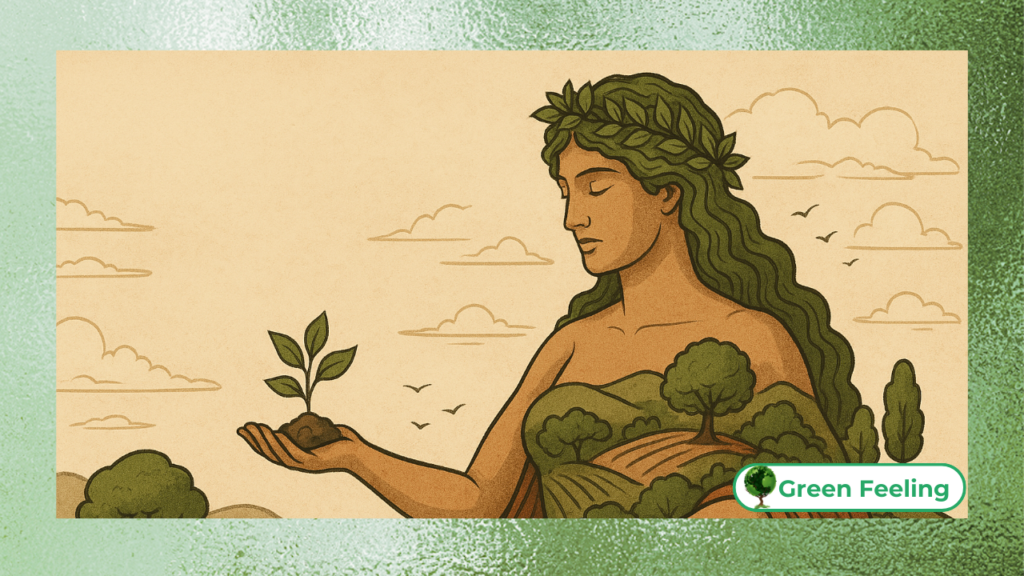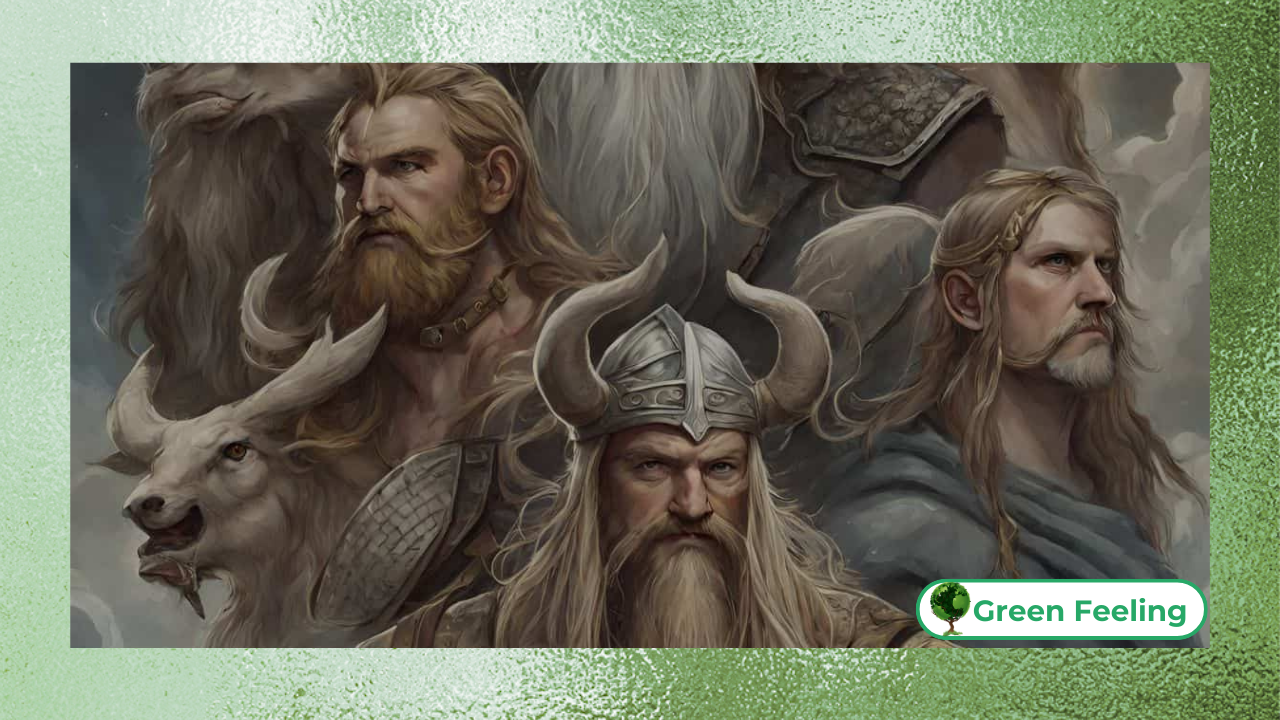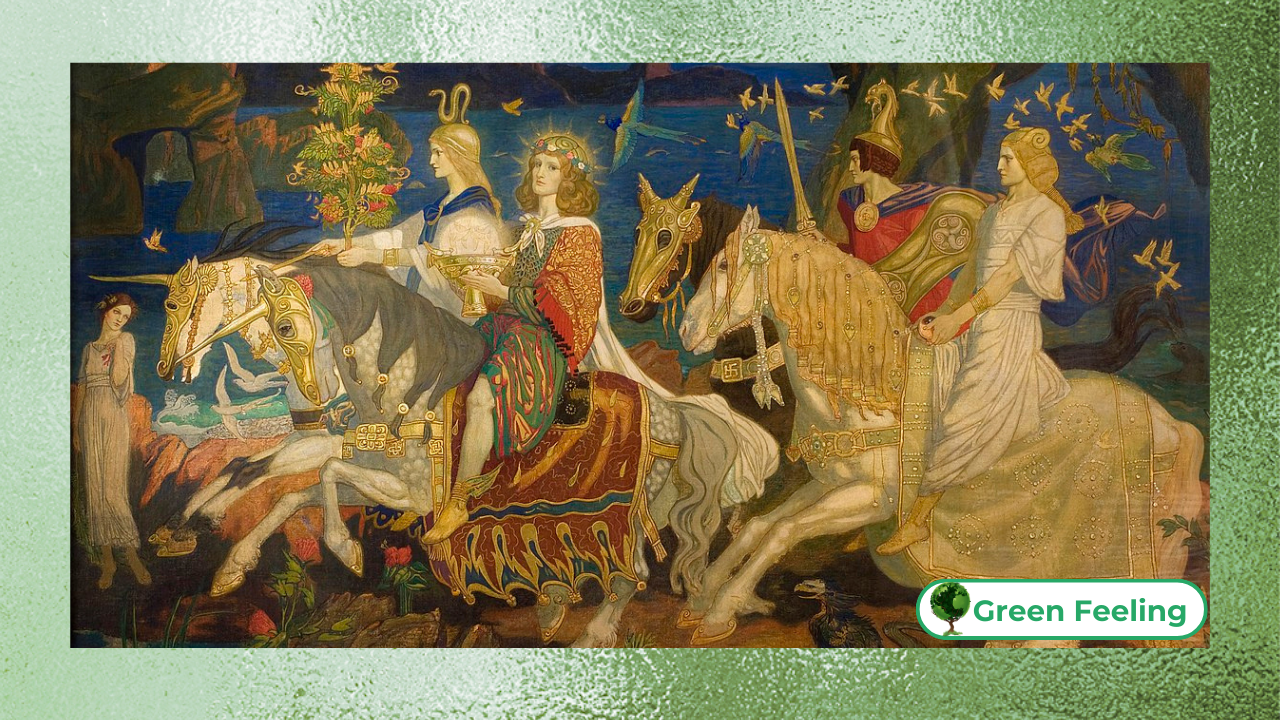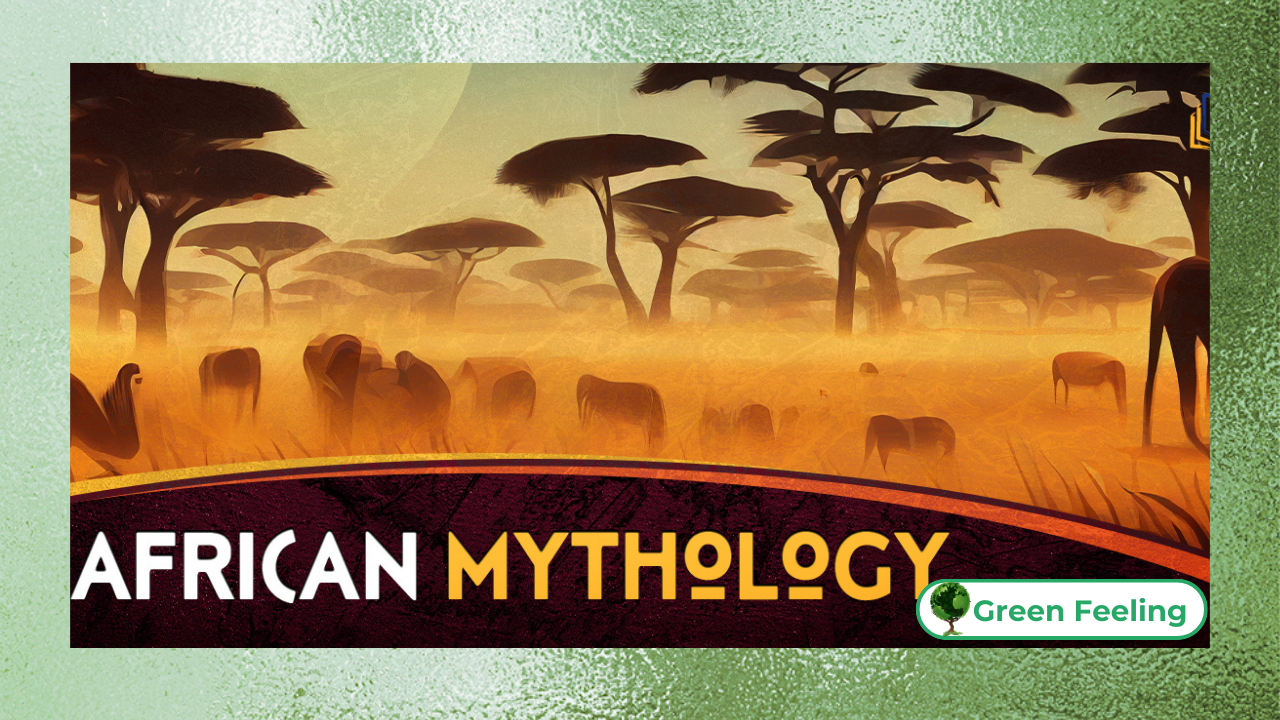Gaia and Agroecology: The Living Earth Cult in Greek Mythology
In the pantheon of Greek deities, Gaia stands unique as both goddess and physical embodiment of the Earth itself.

This ancient conception of our planet as a living, conscious entity predates modern ecological thought by millennia yet remarkably anticipates contemporary agroecological principles.
The Greeks understood something we’re only now rediscovering through science: that the Earth operates as an interconnected, self-regulating system demanding our reverence and care.
The worship of Gaia permeated every aspect of ancient Greek agriculture, transforming mundane farming practices into sacred rituals that maintained balance with nature.
Read more Gaia: https://www.theoi.com/Protogenos/Gaia.html
As environmental philosopher Thomas Berry observed:
“The universe is a communion of subjects, not a collection of objects.” -Thomas Berry .
This fundamental worldview shaped how Greek farmers interacted with their land – not as conquerors but as participants in Gaia’s living systems.
Today’s agroecology movement echoes this ancient wisdom, advocating for farming methods that work with rather than against natural processes.
Gaia in Greek Cosmology: The Animate Earth
Hesiod’s Theogony (8th century BCE) presents Gaia as the first deity emerging from Chaos, immediately establishing her as the foundation of all existence.
Unlike later Olympian gods who ruled from afar, Gaia was quite literally the ground beneath farmers’ feet – alive, sentient, and responsive to human actions.
This belief system encoded sophisticated ecological understanding through mythological narratives.
Key aspects of the Gaia archetype include:
- Self-generation: Gaia created the mountains, seas, and sky through parthenogenesis
- Interconnectedness: All life forms as her descendants
- Reciprocity: Required offerings and respect from humans
- Retribution: Ability to withdraw fertility from mistreated lands
As classicist Jane Ellen Harrison noted in Prolegomena to the Study of Greek Religion: “The Earth was never merely dirt to the Greeks, but a living personality, the mother of all.”
This worldview naturally led to agricultural practices that honored the land’s vitality.
+ Norse vs. Greek Mythology: The Power of Earth and Heaven
Sacred Agriculture: Rituals and Practices
Greek farmers didn’t separate their spiritual life from agricultural work.
Seasonal festivals like the Thesmophoria (honoring Demeter and Persephone) synchronized human activity with natural cycles, embedding ecological wisdom in religious practice.
Read more Thesmophoria: https://www.hellenion.org/festivals/thesmophoria/
These rites often involved:
- Seed-saving ceremonies that preserved genetic diversity
- Fertility rituals to restore soil health
- Sacrificial offerings of first fruits back to the land
- Agricultural taboos preventing overexploitation
The physical landscape was organized according to sacred geography:
| Sacred Space | Purpose |
Modern Agroecology Parallel
|
| Temple groves | Biodiversity preserves |
Conservation areas
|
| Oracle sites | Ecological knowledge centers |
Agricultural extension stations
|
| Terraced farms | Sustainable land shaping |
Contour farming systems
|
Modern Gaia Theory and Agroecology
James Lovelock’s Gaia Hypothesis (1970s) scientifically validated the ancient intuition of Earth as a self-regulating system.
This revived understanding informs contemporary agroecology through:
Core Principles:
- Viewing farms as ecosystems rather than factories
- Prioritizing soil as a living organism
- Valuing biodiversity as essential to resilience
- Emphasizing cyclical rather than linear processes
As Vandana Shiva articulates in Soil Not Oil:
“Industrial agriculture treats soil as dead matter, while traditional farming knew it as the living skin of Gaia.“ – Vandana Shiva.
This shift in perspective mirrors the ancient Greek understanding that disrespecting the Earth’s living systems invites disaster.
+ African Mythology: Spirits of the Earth and Mystical Creatures
Sacred Sites and Modern Applications
Several Greek locations demonstrate the continuity between ancient Gaia worship and modern ecological practice:
1. Eleusis
- Site of the Eleusinian Mysteries
- Combined grain cultivation with spiritual initiation
- Modern organic farms revive ancient wheat varieties
2. Delphi
- Originally a Gaia oracle site
- Terraced agriculture prevented erosion
- Now hosts international agroecology conferences
3. Crete
- Minoan civilization’s sustainable practices
- Ancient water management systems still used
- Model for climate-resilient polycultures
Principles of Gaia-Inspired Agriculture
Modern farmers drawing on this tradition emphasize:
- Observation: Learning nature’s patterns
- Diversity: Mimicking natural ecosystems
- Reciprocity: Giving back to the land
- Restraint: Taking only what can be renewed
- Gratitude: Honoring the source of sustenance
+ Urban Agroecology: Community Gardens and Sustainability in Cities
Gaia and Agroecology: The Living Earth Cult in Greek Mythology?
This synthesis of ancient wisdom and modern science raises profound questions:
Can reconnecting with Gaia consciousness transform our broken food systems?
Does framing agriculture as sacred practice rather than industrial process hold the key to sustainability?
The answers may lie in recognizing that the Greeks encoded in myth what science now confirms – the Earth operates as an intelligent, interconnected whole that thrives when treated with reverence.
Conclusion
The ancient Greek veneration of Gaia as the living Earth offers more than mythological fascination—it presents a vital blueprint for ecological survival in our era of climate crisis and agricultural industrialization.
As we stand at the precipice of environmental collapse, the wisdom encoded in these ancient practices speaks with renewed urgency.
The fundamental insight that the Earth operates as an intelligent, self-regulating system—once expressed through poetic metaphor—has been validated by modern science through Lovelock’s Gaia Hypothesis and contemporary systems ecology.
This convergence of ancient intuition and scientific confirmation suggests we must urgently revive what farmer-philosopher Wendell Berry calls “the old knowing”—the understanding that human agriculture must operate within nature’s boundaries rather than attempting to dominate them.
The rituals of ancient Greek farmers—their seasonal festivals, sacred groves, and offerings to Gaia—were not primitive superstitions but sophisticated mechanisms for maintaining ecological balance.
By embedding agricultural practice within a sacred worldview, they ensured that each generation internalized the principles of sustainability through myth and ceremony.
Today’s agroecology movement represents a scientific reclamation of this wisdom, demonstrating through empirical research what the Greeks knew instinctively: that diverse polycultures outperform monocultures, that healthy soil teems with microbial life, and that water management requires careful observation of natural systems.
The resurgence of interest in ancient Greek agricultural sites like Eleusis and Delphi—now studied for their climate-resilient designs—proves this knowledge remains vitally relevant.
Ultimately, the Gaia mythos challenges the fundamental assumption of industrial civilization: that humans stand apart from nature.
As we face escalating climate disasters, soil depletion, and biodiversity collapse, reconnecting with this ancient worldview may be our only path forward.
The Greeks understood that Gaia gives life but also demands respect—a lesson we ignore at our peril.
By merging the spiritual reverence of Gaia worship with the technical precision of modern agroecology, we might yet cultivate a future where human agriculture nourishes rather than depletes the living Earth we depend upon.
- Hesiod. (8th century BCE). Theogony
- Harrison, J.E. (1903). Prolegomena to the Study of Greek Religion
- Lovelock, J. (1979). Gaia: A New Look at Life on Earth
- Shiva, V. (2008). Soil Not Oil
- Kerényi, C. (1967). Eleusis: Archetypal Image of Mother and Daughter
- Greek Ministry of Culture. (2021). Sacred Landscapes of Ancient Greece
- FAO. (2022). Traditional Mediterranean Agriculture Systems






